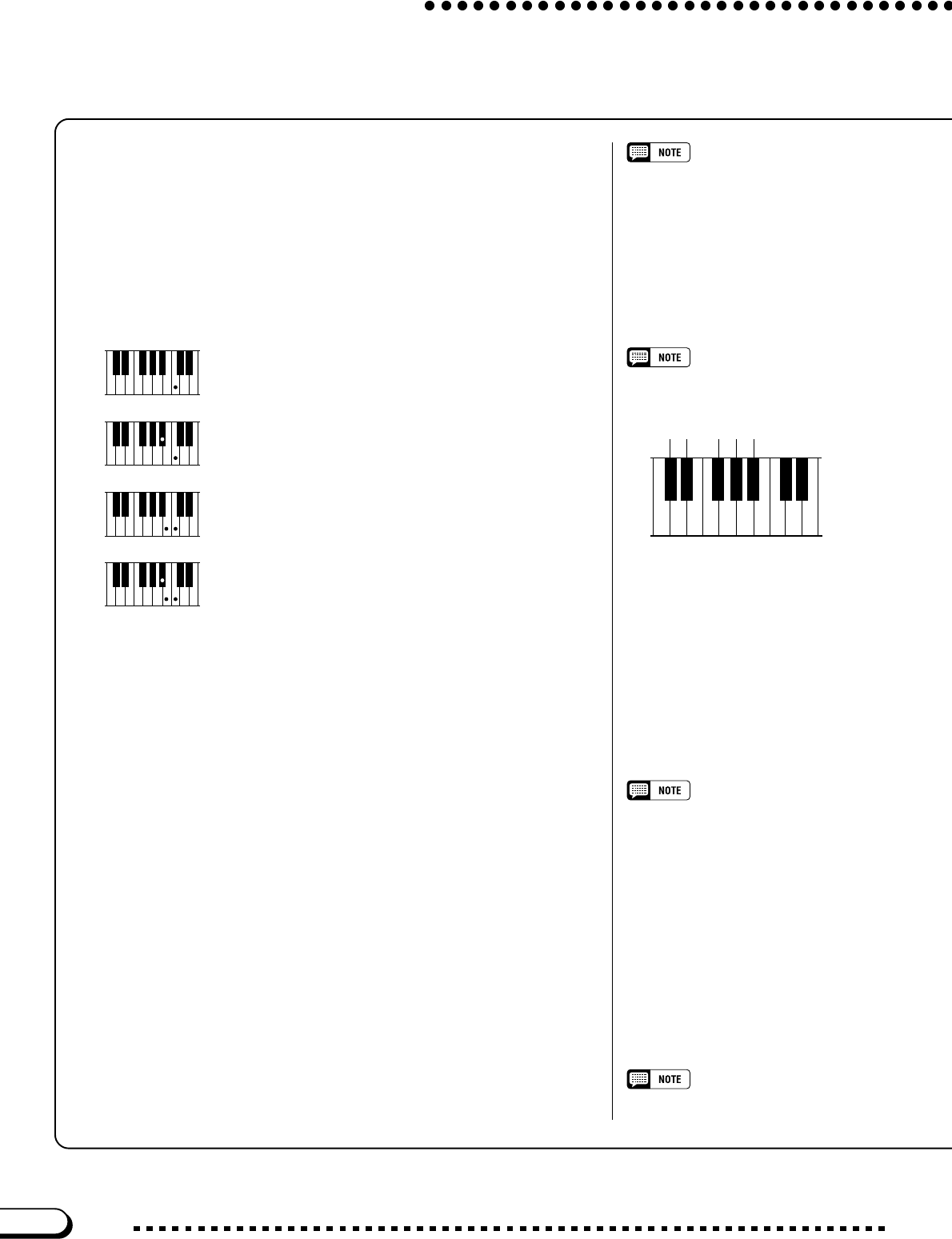
60
CVP-103
Accompaniment Modes
• The Clavinova displays the names of
the chords you play at the left edge of
the main display, below the tempo.
• The same accompaniment continues
(even after you release the chord in
the left range) until you play the next
chord.
■ Single Finger Chords
The following four chord types can be played in Single Finger mode:
The illustration below shows the key
corresponding to each root note.
• Major
Press the root note of the chord.
• Minor [m]
Simultaneously press the root note of the chord and any
black key to the left of it.
• Seventh [7]
Simultaneously press the root note of the chord and any
white key to the left of it.
• Minor Seventh [m7]
Simultaneously press the root note of the chord and any
white and black keys to the left of it (three keys at once).
Two-note fingerings will produce a chord
based on the previously played chord.
● Fingered 1
To control the Auto Accompaniment, play any chord in the left range
of the keyboard (below and including the split point). Play the melody in
the right range along with the Auto Accompaniment.
• The automatic accompaniment will
sometimes not change when related
chords are played in sequence (e.g.
some minor chords followed by the
minor seventh).
• If the Clavinova cannot recognize a
chord you play, an asterisk “ * ” will
appear instead of the chord name in
the display.
• Drums-only accompaniment can be
produced by pressing any three con-
secutive keys (e.g., C, C
#
, D) simulta-
neously. This lets you create dynamic
“drum breaks” in the accompaniment.
A series of dashes “- - -” will appear
instead of a chord name in the display.
Cm
C
7
Cm
7
C
● Multi Finger
This method allows you to control the Auto Accompaniment using
either the Single Finger method (described above) or the Fingered 1
method (described below). However, when indicating minor, seventh or
minor seventh chords, it is necessary to play the white key and/or black
key nearest the root note of the chord.
Playing with the Auto Accompaniment
● Single Finger
To control the Auto Accompaniment, press one, two, or three keys in
the left range of the keyboard (below and including the split point), fol-
lowing the rules described below. Play the melody in the right range
along with the Auto Accompaniment.
CDEFGAB
F# Ab Bb
(Gb)(G#)(A#)
C# Eb
(Db)(D#)
58


















